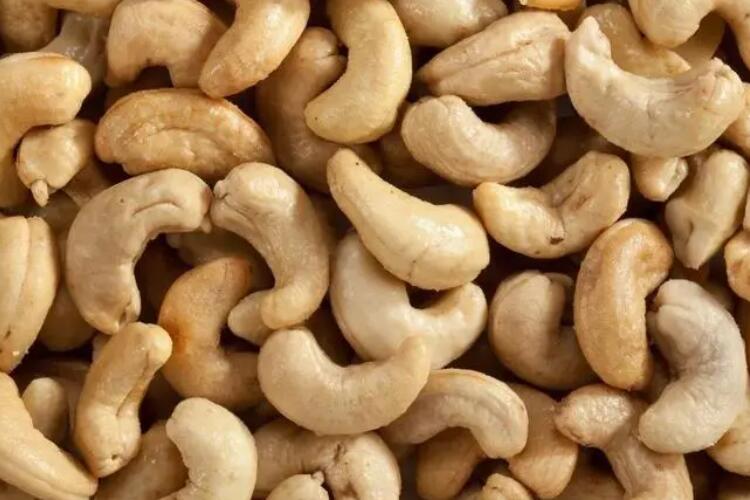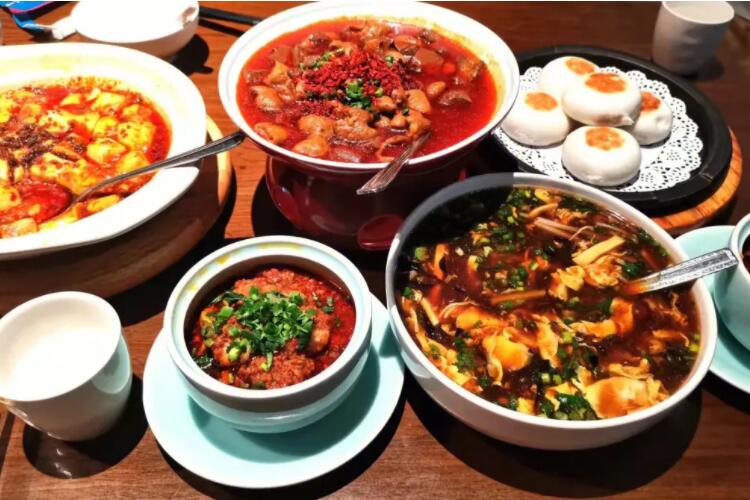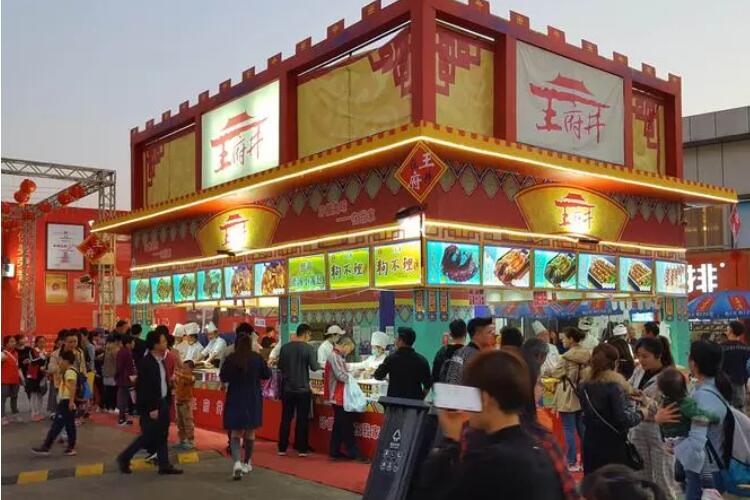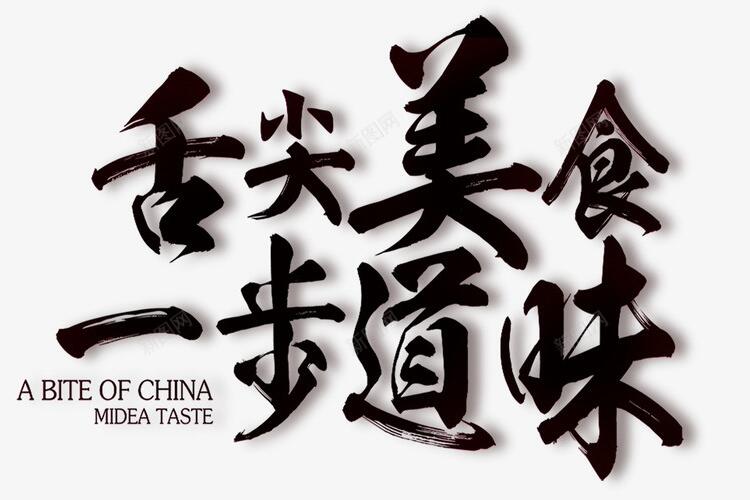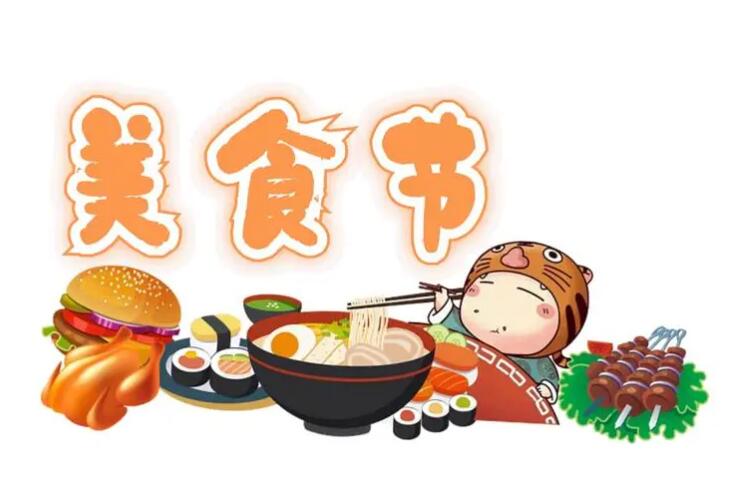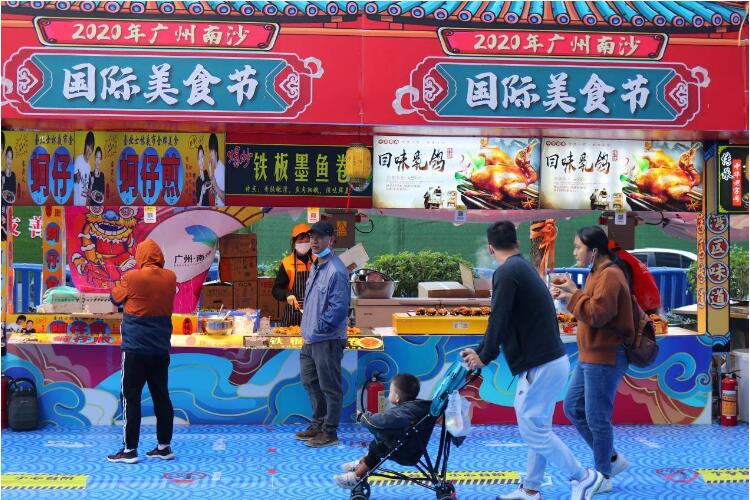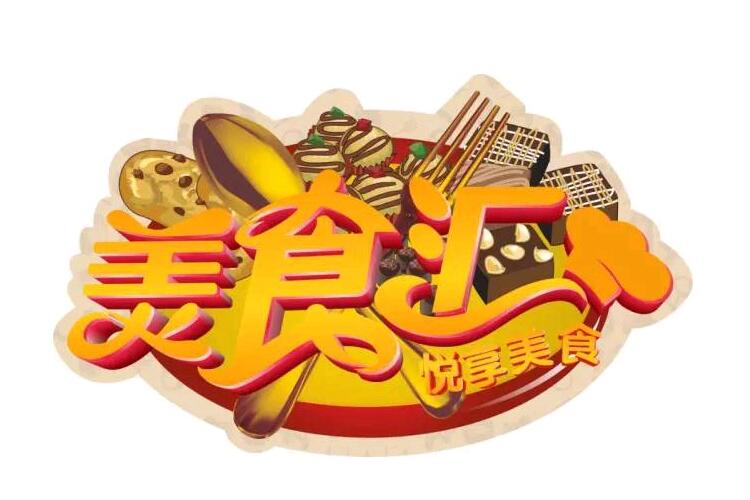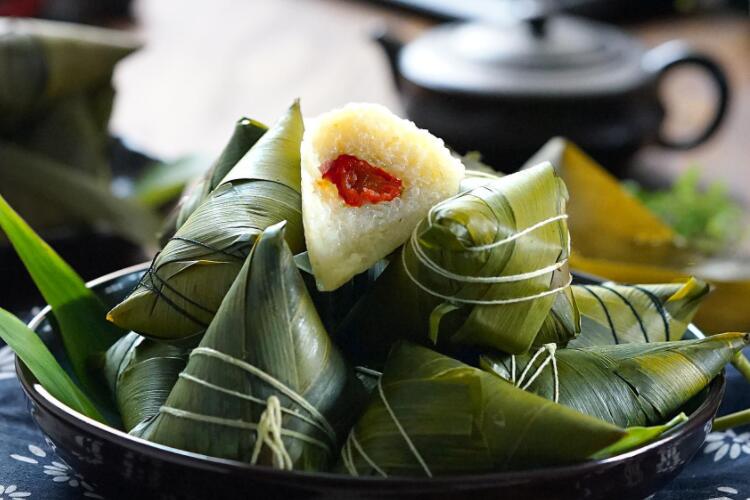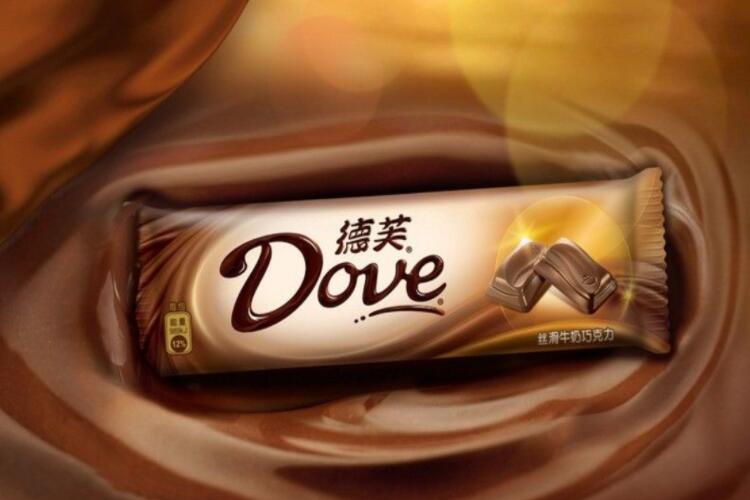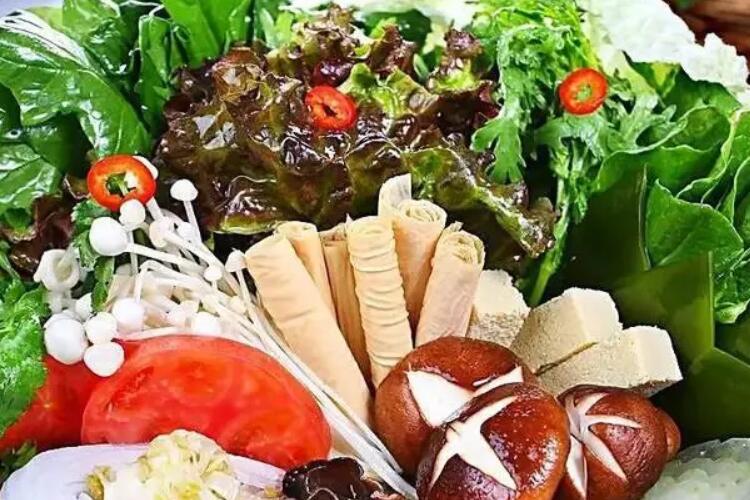美食英文宣传片解说词配音
Everyday Eating Customs in China(1)Family MealsThough customs and the kinds of food eaten vary according to region, it is most common for Chinese families to gather for three meals a day. In some areas and at some times of the year, laborers may have only two full meals a day, but when possible, they supplement these with up to three smaller ones, often taken at tea houses. There is not, in general, the strong association we have in the West between the type of food and the time of day it should be served (say, eggs for breakfast, a sandwich for lunch, pot roast for dinner). The sorts of dishes served at the two or three main meals are pretty much the same.

The goal in planning, however, is to provide a number of dishes at each meal, so that, rather than experiencing difference by comparison between one meal and the next, each meal includes, in itself, a satisfying array of elements.The Stuff of the MealThe center of the Chinese meal is fan, or grain. So much so, that the meal itself is called hsia fan, "a period of grain." In the South and among urban families in other areas, the fan may be rice or rice products, but rice is expensive, as is the wheat eaten in the North in the form of cooked whole grains, noodles, or bread. Depending on the region, then, less prosperous families might make their meals of millet, sorghum, or corn. The meats and vegetables we think of as the focus of the meal are known as ts'ai, which means something like "side dishes" -- one could almost go so far as to call them condiments for the fan.Place Settings and Serving EtiquetteAn individual place setting for an everyday meal includes a bowl of fan, a pair of chopsticks, a flat-bottomed soupspoon, and a saucer. Instead of a napkin, a hot towel is often provided at the end of the meal for the diner to wipe his hands and mouth. The meat and vegetable dishes are laid out all at once in the center of the table, and the diners eat directly from the communal plates using their chopsticks. Soup is also eaten from the common bowl. Rather than for serving oneself a separate portion, the saucer is used for bones and shells or as a place to rest a bite taken from a communal plate when it is too large to eat all at once. It is perfectly acceptable to reach across the table to take a morsel from a far-away dish. To facilitate access to all the dishes, Chinese dining tables are more likely to be square or round, rather than elongated like their western counterparts.Who Eats When and HowEating begins in order of seniority, with each diner taking the cue to start from his or her immediate superior. Children are taught to eat equally from each ts'ai dish in turn, never betraying a preference for a particular item by eating more of it, never seeming to pause to choose a specific bite from the plate. In order to cool the soup a bit and to better diffuse the flavor in the mouth, soup is eaten by sipping from the spoon while breathing in. This method, of course, produces the slurping noise that is taboo in the West. To eat fan, a diner raises the bowl to her lips and pushes the grains into her mouth with chopsticks. This is the easiest way to eat it and shows proper enjoyment -- eating fan from a bowl left sitting on the table suggests dissatisfaction with the food. The diner must finish all the fan. To leave even a grain is considered bad manners, a lack of respect for the labor required to produce it.AccompanimentsNeither beverages nor dessert are commonly served with a meal. People drink tea nearly all day, but at meals soup is usually the only liquid provided. At special events there may be wine or liquor, but the water that westerners drink with their meals is never present. Sweet foods are usually reserved for special events, where they are served between courses, or for small meals at tea houses.(2) A Chinese BanquetBanquets are held to celebrate the New Year, the Moon Festival, weddings, and other special occasions. Each event is associated with particular treats -- filled moon cakes for the Moon Festival or New Year's pudding, for example -- but there are also many common characteristics and ceremonies involved. A banquet acquires much of its festive character through 2 elements: the release from some everyday eating customs (usually those that impose restraint) and the exaggeration of others. At a banquet, for example, rice doesn't need to be treated as the center of the meal, but the respectful interaction between guest and host, a commonplace, must be performed with extra gusto.Getting InThe meal begins with the entry of the revelers into the banqueting room. An elaborate ceremony of deference may take place at the door, where the most honored guest is supposed to enter first. Two or more guests may hold up this entry for some time, each insisting that the other is more worthy of this honor. The ensuing debate can, among good friends, lead to a bit of pushing, as the struggle escalates. Once through the door, the process may begin again, this time over the issue of precedence at the table. Usually, the guest of honor sits directly across from the host, who takes the least honorable seat near the serving door.Serving the MealRegular Chinese meals are served all at once, but a banquet is about bounteousness, a host's generosity and prosperity, and the joy of celebration, so the food is brought in many successive courses. In a further display of exaggerated courtesy, the host apologizes in advance for the meager and ill-prepared meal about to be served. Hot towels are distributed at the beginning and end of the meal.What is Served, or Beyond the GrainIn a dramatic reversal of everyday habit, banquets consist solely of special dishes. The meat and vegetables that serve as side dishes at regular meals become the focus, and fan, or grain, which is normally so important that every last grain must be consumed, is relegated to the very end of the meal and guests need only to pick at the fan, indicating their supreme satisfaction. To eat one's rice at a banquet might hint that the host failed to provide enough food.What is DrunkAlcohol is very rarely served at everyday meals, but it plays an important role at banquets. In the West, the type of alcohol must match the meal according to set customs, and often the guests' special preferences must be accommodated. This is not the case in China, where the host often decides on one sort of alcoholic beverage, either a wine or liquor, which will be served throughout. Wine glasses are traditionally filled at the start of each course. The banquet will probably be marked by guests challenging each other to drinking games throughout the evening.Commencement of the MealThe meal begins with a toast by the host, after which there is a long moment while the guests engage in the ceremony of beginning -- the degree of politeness exhibited by a guest at this stage increases with every moment he waits to start eating. Throughout the meal, the host displays great solicitousness for the guests. Guests may refuse offers of food or drink two times or more without being taken at their word - or, of course, without really meaning their polite refusals.The CoursesThe first course is an even-numbered selection of cold dishes, eight or ten are traditionally served. After the cold course comes a showy soup such as shark's fin soup or bird's nest soup. The guests help themselves to the dishes at a banquet, but the soup is served by the host, and much drinking and toasting accompanies. Following the soup comes a decorative meat dish. More courses follow -- lobster, pork, scallops, chicken. Between the courses, a variety of sweets are brought out. Peking duck with scallion brushes, hoisin sauce, and thin pancakes is often served in the middle of the festivities. Traditionally, the final course is a whole fish, which is placed on the table with its head is pointed toward the guest of honor. Throughout the meal, the guests pay elaborate compliments to the food. Enjoyment of the food offered is much more important than sparkling dinner table conversation. At a banquet, the food itself is the medium communicating the host's good wishes and the joy of the celebration.(3) Chinese Dining: Beliefs and Etiquette"A Chinese dinner host will not expect a visitor to know all the traditions associated with a Chinese meal. But the visitor who knows some of them will gain 'face' and give 'face' to his host!"Investigating those traditions is part of the fun of a Hong Kong visit, where English-speaking friends or business associates will happily tell you the whys and wherefores of seemingly arcane rituals. You may even hear different versions of how a particular dining tradition originated!Foreign visitors will be forgiven for not knowing dining etiquette, just as they will be good-naturedly offered a knife and fork if their chopstick prowess is not up to par. Just as Chinese food, however, seems to taste better when it is eaten with chopsticks, so the whole meal will be more enjoyable if one knows a little of the ancient traditions and beliefs that place the meal in a 5,000-year-old culinary heritage.Why is a fish never turned over? Why do tea-drinkers surreptitiously tap tables? Why will there be a place laid for a guest who will never come? Why is it not improper to slurp you soup but improper to eat a fish head? Why are Chinese dinner tables round and how will you know who is the guest of honor? How and why will you say "Cheers!"?Although Western customs have influenced dining habits in Hong Kong, the majority of old traditions still live on. The guest of honor will usually be seated facing the door of entry, directly opposite the host. The next most honored guest will be seated to the left of the guest of honor. If the host has any doubts about the correct order of precedence for his guests, he will seat them on the basis of age.The host sits near the door, as in Western practice, so that he is nearest to the kitchen. If the meal is held in the host's home, he can then bring each dish to the table more quickly. He will himself serve his guests portions of food, on the tacit understanding that they are far too polite to help themselves.But for some dishes, especially fish, the host would never do so - for the good reason that the dish would be inedibly cool by the end of the service. Instead, each guest is expected to help himself.(4) The Guest Gets the BestThe guest of honor naturally receives the choicest morsels, and is expected to lead the way when necessary. With a fish course, the fish head would be left for the guest of honor - and it is the most nutritious part (the eyes and lips are the valued delicacies offered to the senior lady present). The platter holding the fish will always be laid on the table in such a way that the fish head points towards the guest of honor (at family meals, the head faces the head of the family). If visitors find that they are the guest of honor and are unwilling to accept the duties involved, they should always delegate the honor to the person on their left, or politely turn the platter so that the fish head faces the host.At the end of the meal, when the guest of honor feels that everyone appears to have had their fill of post-prandial brandy or ceremonial final cups of tea, he should rise. In theory, no other diner can rise until the guest of honor has, and such a social nicety has often resulted in a meal being very lengthy! Nowadays, however, the host will usually give an appropriate, discreet hint to the guest of honor.In a restaurant, the signs that a meal is ending are more obvious. A bowl of fruit will be presented, fresh towels will be provided for wiping mouths and hands, and the final pot of tea - a ceremonial farewell greeting - will not be refilled.(5) Seating & Dining Customs in RestaurantIf a Chinese dinner has been arranged in a restaurant, the host will usually sit nearest the kitchen or service door. Then he will be in the least-favored position - sitting where the waiter will stand while serving individual portions of food (the waiter's "mark" being his serving utensils laid on the table). Some hosts, however, seat their most junior guests or family members at this slightly awkward spot so that the host can talk more easily to guests on either side of him. It is also becoming more common for hosts to sit next to foreign guests of honor.Should you find yourself in one of the "junior" seats on either side of the server's position, take comfort from the fact that your fellow diners are either even more "important" or older than you and you are honored to be sitting with them, or your host has flattered you by deciding you are one of the least status-conscious guests!Whatever your table position is, you may be expected to make at least one toast during the meal - to the course which is about to commence, if necessary, when everyone else has used up all socially-acceptable topics of mutual esteem! Every person stands up for a moment, raises his or her glass, and finds out who has the strongest constitution!Taking one's turn is also expected for tea-pouring at smaller gatherings where each guest leans over or rises to fill fellow-diners' tea cups. The almost surreptitious finger-tapping on the table that greets the pouring service is said to date back to a ploy invented by a Qing Dynasty emperor. While making an incognito tour of South China, the emperor visited a teahouse. In order to maintain his cover as an ordinary member of a party of travelers, the emperor took his turn at pouring tea for his companions. They started to acknowledge this astonishing honor by bowing in the usual fashion but the emperor told them they could simply tap the table with three fingers - two of which would represent their prostrate limbs, while the third finger would symbolize their bowed heads. The custom survives in Hong Kong and South China as a silent token of thanks for the gesture.Other, older habits have been known to make some visitors a little uncomfortable when not used to fellow diners slurping their soup, laying discarded bones on the tablecloth, and audibly making a meal of a meal.The second habit is dying out now that most restaurants provide side-plates for bones but it is still possible to see waiters clearing a table by sweeping everything into the middle of a tablecloth - rice bowls, chopsticks, bones and all - in order to have a vacant table as quickly as possible.As for meal-time noises, they are considered sounds of culinary appreciation, the slurping of soup also being an acceptable way of cooling it down before it burns the tongue.
hncbc 2009-02-20 18:04:00
The main difference between Chinese and Western eating habits is that unlike the West, where everyone has their own plate of food, in China the dishes are placed on the table and everybody shares. If you are being treated by a Chinese host, be prepared for a ton of food. Chinese are very proud of their culture of food and will do their best to give you a taste of many different types of cuisine. Among friends, they will just order enough for the people there. If they are taking somebody out for dinner and the relationship is polite to semi-polite, then they will usually order one more dish than the number of guests (e.g. four people, five dishes). If it is a business dinner or a very formal occasion, there is likely to be a huge amount of food that will be impossible to finish. A typical meal starts with some cold dishes, like boiled peanuts and smashed cucumber with garlic. These are followed by the main courses, hot meat and vegetable dishes. Finally soup is brought out, which is followed by the starchy "staple" food, which is usually rice or noodles or sometimes dumplings. Many Chinese eat rice (or noodles or whatever) last, but if you like to have your rice together with other dishes, you should say so early on. Everything is relative, cultural difference being no exception. Culture, as the total pattern of human behavior and its products, oversteps geographical limits and historical conditions in many ways, and it is characterized by its strong penetrativeness and fusibility. It is no surprise to see phenomena characteristic of one culture existing in another. As a result, some people even fear that the world will become a dull place when all the different nationalities behave exactly alike. Nevertheless, the “cultural sediment” formed through long-range accumulation is not to be easily removed, and the cultural tradition handed down from generation to generation shows great consistency and continuity. The cultures of different regions and nations still have their own distinctive peculiarities, and therefore significance still needs to be attached to the study of the individualities of different cultures against the background of their universality.
声明:本站所有文章资源内容均来自互联网,一切版权均归源网站或源作者所有。如若本站内容侵犯了原著者的合法权益,可联系本站删除。
上一篇:美食番鸭产出地美食宣传片配音文稿



